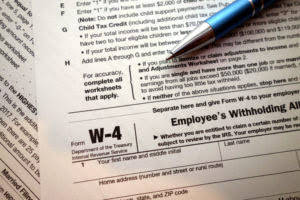
This targeted approach helps in boosting turnover rates and enhancing overall financial health. Getting demand forecasting right is crucial for businesses looking to balance their inventory with actual customer demand. Comparing your ITR to industry averages is a powerful way for businesses to gauge their competitive position.
How is inventory turnover ratio calculated?
Inventory and accounts receivable turnover ratios are extremely important to companies in the consumer packaged goods sector. The eTurns TrackStock app can help companies improve their inventory turnover ratio and lower their inventory carrying costs through helpful inventory optimization tools. For example, using TrackStock’s Min/Max Tuning feature allows businesses to carry the ideal amount of inventory based on their past usage, eliminating stockouts while also avoiding excess carrying costs. Features like these help businesses boost efficiency and save money, which will be reflected in future inventory turnover ratios.
Why Is Inventory Turnover Ratio Important?
Danielle Bauter is a writer for the Accounting division of Fit Small Business. She has owned Check Yourself, a bookkeeping and payroll service that specializes in https://www.bookstime.com/ small business, for over twenty years. She holds a Bachelor’s degree from UCLA and has served on the Board of the National Association of Women Business Owners.
Related Inventory Ratios
Looking for ways to minimize spoilage and accidental damage can help you improve your turnover ratio. For example, you can refine your product packaging which of the following factors are used in calculating a company’s inventory turnover? and update your quality controls to help reduce waste. The inventory turnover ratio can be surprisingly complex to calculate in practice.

Nick Gallo is a Certified Public Accountant and content marketer for the financial industry. He has been an auditor of international companies and a tax strategist for real estate investors. He now writes articles on personal and corporate finance, accounting and tax matters, and entrepreneurship. Your inventory turnover ratio is one of the many indicators of a healthy and efficient business, and knowing the basics of how to properly manage your inventory is crucial for your success. The best inventory ratio is the one that keeps your business as profitable as possible.
- The eTurns TrackStock app can help companies improve their inventory turnover ratio and lower their inventory carrying costs through helpful inventory optimization tools.
- Therefore, products with a low turnover ratio should be evaluated periodically to see if the stock is obsolete.
- Companies tend to want to have a lower DSI, and they usually want that DSI to be sufficient enough to cover short-term cash needs.
- Our partners cannot pay us to guarantee favorable reviews of their products or services.
- Retailers tend to have the highest inventory turnover, but the rate can indicate a well-run company or the industry as a whole.
- For example, a company with $20,000 in average inventory with a COGS of $200,000 will have an ITR of 10.
However, if a company exhibits an abnormally high inventory turnover ratio, it could also be a sign that management is ordering inadequate inventory, rather than managing inventory effectively. Inventory turnover measures how often a company replaces inventory relative to its cost of sales. The Inventory Turnover Calculator can be employed to calculate the ratio of inventory turnover, which is a measure of a company’s success in converting inventory to sales. Navigating the complexities of modern business requires a keen understanding of various financial metrics. One such vital tool is the Inventory Turnover Ratio (ITR), a standard gauge that evaluates how efficiently a business manages its inventory. In this comprehensive guide, we’ll peel back the layers of the Inventory Turnover Ratio, helping you to understand its formula, practical tips, and real-world examples.
The information for this equation is available on the income statement (COGS) and the balance sheet (average inventory). The inventory turnover ratio is calculated by dividing the cost of goods sold (COGS) by the average inventory balance for the matching period. What counts as a “good” inventory turnover ratio will depend on the benchmark for a given industry. In general, industries stocking products that are relatively inexpensive will tend to have higher inventory turnover ratios than those selling big-ticket items.
- The more efficient and the faster this happens, the more cash a company will receive, making it more robust against any face-off with the market.
- Here’s why inventory turnover ratio is important and how to calculate it.
- Before calculating the inventory turnover ratio, we need to compute the average stock and cost of sales.
- The inventory turnover ratio measures how many times the inventory is sold and replaced over a given period.
- Note that Excel is a powerful tool that allows for quick and easy calculations of ratios and formulas.
However, it is essential to remind you that this is only a financial ratio. For a complete analysis, an extensive revision of all the financials of a company is required. As powerful extra tools, other values that are really important to follow in order to verify a company’s profitability are EBIT and free cash flow. The first is easy to calculate and gives an overall picture, but it doesn’t account for markup or seasonal cycles.
